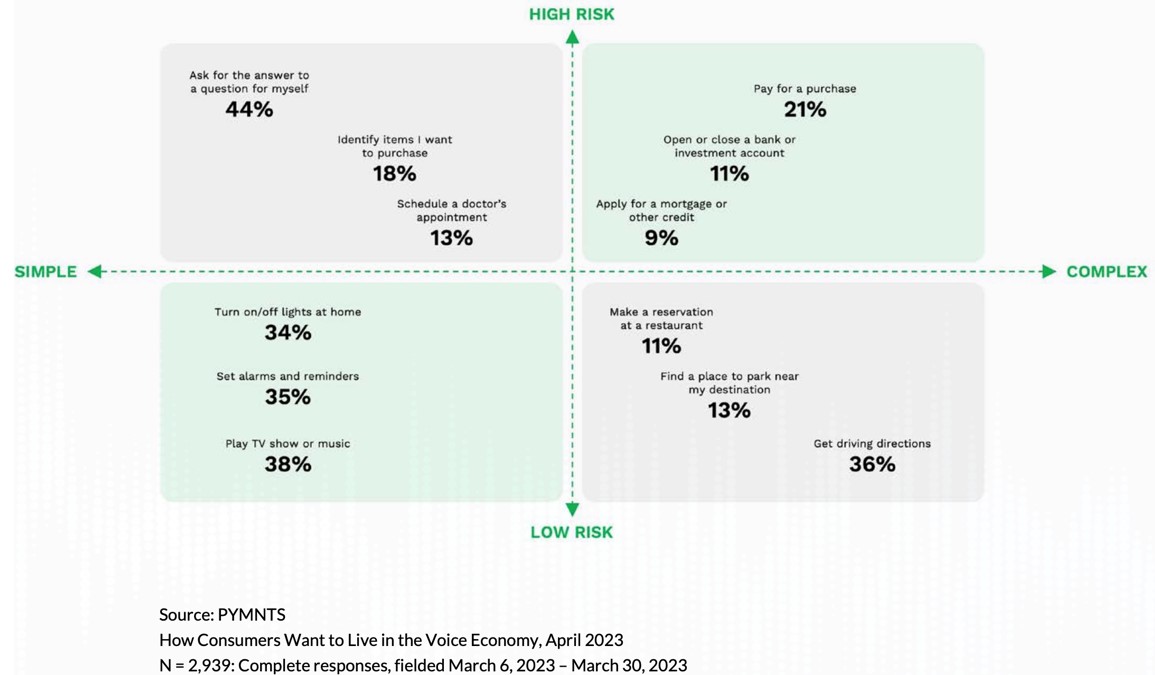Thirty Percent of US Millennials Use a Voice Assistant to Pay Bills

The Voice Economy is gaining momentum as consumers turn to voice technology for a variety of tasks.
The most common tasks performed with this technology include watching TV or playing music, transferring money, and ordering taxi services or groceries, but also more complex tasks with higher risks such as paying bills or opening a bank account.
“How Consumers Want to Live In the Voice Economy” is a PYMNTS Intelligence study that examines consumers’ views and attitudes toward voice technology, the friction they face, and what they expect from voice technology in the future. As extracted from the survey, 65% of consumers in the U.S. have used voice technology in the past year, and 21% completed a purchase with a voice assistant. This share is even higher for millennials, with 30% of them paying recurring bills in the same period.

Among the tasks performed by this technology, voice shopping and mobile commerce are a perfect match due to their shared convenience, speed and accessibility. Moreover, voice shopping also enhances the consumer experience by providing personalized recommendations, facilitating research on products, or comparing offerings. Personalization is a key aspect of the customer experience, and voice shopping assistants can use data to create curated experiences tailored to each user’s preferences. Merchants know this and are adapting their service offering by adding voice technology or artificial intelligence (AI) assistants to help customers with their purchases.
Following this trend, Amazon has launched a simple voice command with Alexa to make payments using Amazon Pay. Along with Amazon, other big techs are using AI chatbots, such as Microsoft’s Bing and Google’s Bard. These chatbots can provide up-to-date product recommendations based on user criteria, making the research process more efficient. Some of them are equipped with chatbot plug-ins specifically for grocery shopping or travel planning that streamline the process of finding relevant information and making informed purchasing decisions.
Despite the growth and benefits of voice shopping, there are still consumers who have concerns about privacy and data security (19% of consumers consider this is the most important reason for not using voice), and some simply prefer to rely on their own abilities rather than using a voice assistant.
In addition to the previous concerns, about 28% of consumers surveyed by PYMNTS Intelligence said that lack of availability of connected devices keeps them from using voice technology.
As user adoption increases and voice technology continues to advance, higher retention rates are expected as consumers recognize the value and convenience of voice shopping. Trust and accuracy will be crucial factors in driving further adoption of voice technology in near future.

